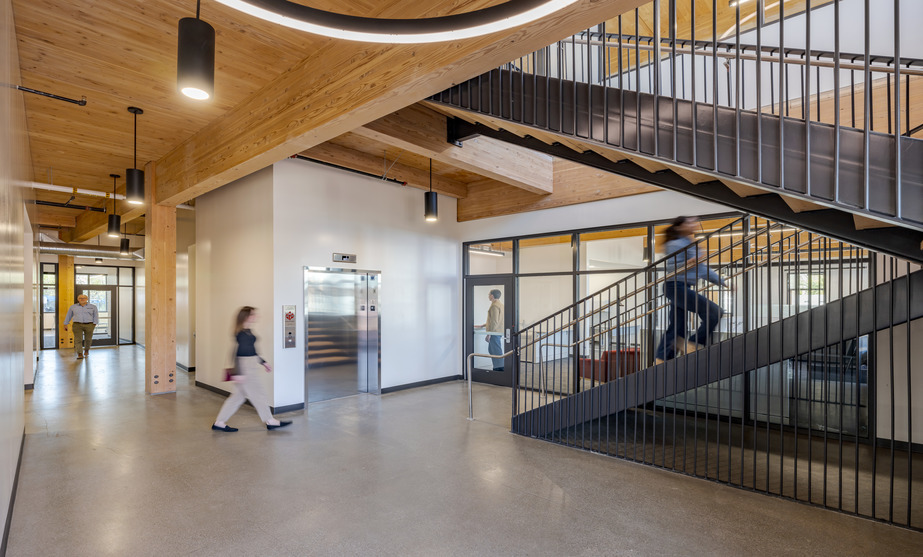Cost and sustainability drive mass timber projects in Wisconsin and California
One project will be tallest in U.S.; another a first on campus.
In Chico, Calif., a Progressive Design-Build Team that included the GC Swinerton and Dreyfuss + Blackford Architects recently completed the University Services Building at California State University at Chico, the first mass timber building for the California State University (CSU) system.
Swinerton’s mass timber partner Timberlab provided the construction materials for the $14.5 million project, whose engineer was Buehler. The timber was harvested from sustainably managed forests in Oregon and Montana.
A cost-competitive option
Jeffrey Good, Swinerton’s divisional manager, tells BD+C that CSU had no fixed mandates on what building materials to use on this project. He also notes that historically the Chico campus had been among the most underinvested in the system.
“So the clearest driver for this project was its cost,” says Good, who was interviewed with Matthew Beyer, Swinerton’s Project Executive.
It turned out that mass timber was the most competitive cost option, especially for the exposed interiors of this two-story, 22,132-sf building.
The Type 5B building (which under code doesn’t require a fire-resistance rating) went up “surprisingly quickly,” says Beyer.
The site was flat, and less concrete was needed because mass timber was used. The biggest challenge was performing the construction in the middle of an active Operations yard where the university stores paint, tools, furniture, vehicles, plumbing, and so forth.
The prefabrication of structural timber components played a critical role in accelerating the schedule and minimizing disruption to ongoing campus activities.
This replacement building “demonstrates how mass timber isn’t just for showpieces—it’s a practical, scalable solution for institutional spaces that care about performance, wellness, and long-term value,” said Lisa Podesto, Swinerton Director of Preconstruction – Mass Timber, in a prepared statement.
The Chico project also served as a model for Swinerton’s other Higher Ed sector work that deploy mass timber, including a $132 million project for Cal Poly Humboldt’s three-story 74,000-sf Engineering & Technology building, scheduled to open for the Fall 2026 semester.
Beyer worked on his first mass timber project around 15 years ago. Over the years, the perception of mass timber as a viable option for construction has grown steadily in favor of the components.
Good says there’s more mainstream interest in using mass timber, and “a much higher capacity for domestic production” than five years ago, with bigger investments in factories. “The construction industry is catching up with the mass timber industry,” he observes, especially with greater focus on sustainability and carbon emissions from building construction.



